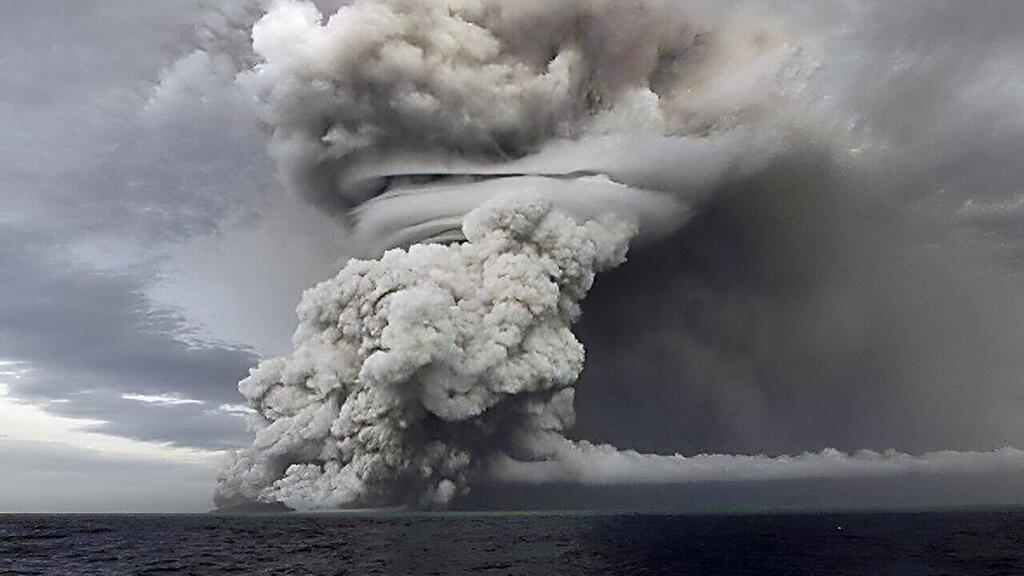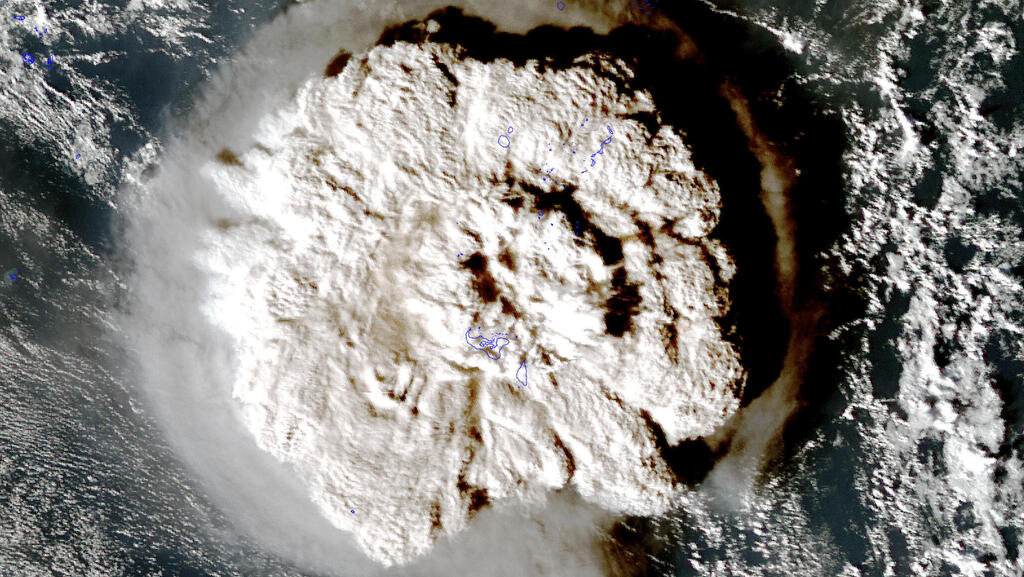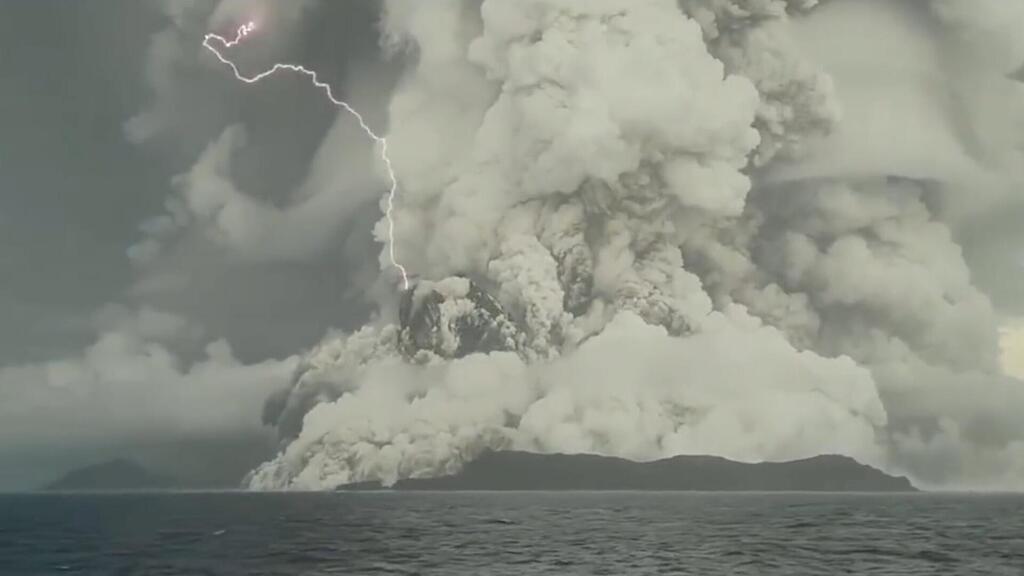Getting your Trinity Audio player ready...
A new study published in the Geophysical Research: Atmospheres Journal, found that the Hunga Tonga volcano’s eruption in the South Pacific actually contributed to cooling the Earth rather than warming it, similar to other major volcanic events.
The volcano’s eruption on January 15, 2022, broke numerous records. Some 200,000 lightning flashes were in the volcanic plume, reaching a peak of over 2,600 flashes per minute.
3 View gallery


Hunga Tonga volcano’s eruption
(Photo: Tonga Geological Services / ZUMA Press / Zuma / RÉA, Dr. Mark Schoeberl)
Additionally, the underwater volcano — located about 30 kilometers (18.6 miles) south of the island of Fonuafo'ou — created a plume of ash, water, and volcanic gas at least 58 kilometers (36 miles) high, reaching the thermosphere (the outermost layer of Earth's atmosphere).
Historically, major volcanic eruptions like Tambora (a volcano on the Indonesian island of Sumbawa) in 1815 and Pinatubo in 1991 (an active volcano on the island of Luzon in the Philippines) led to significant cooling on Earth, as the materials emitted blocked the sunlight.
However, the Hunga Tonga eruption presented a unique scenario: being an underwater volcano, it introduced an unprecedented amount of water vapor into the stratosphere, increasing the stratospheric water content by about 10%.
Since water vapor is a powerful natural greenhouse gas, initial speculations suggested that it significantly contributed to the extreme heat waves experienced worldwide in 2023 and 2024.
The study authors’ methodology included analyzing NASA and NOAA satellite observations of aerosols and water vapor, among other factors, to assess the energy balance of Earth's climate system. The analysis revealed the eruption caused more energy to leave the climate system than enter it, resulting in a slight cooling effect.
"Our paper pours cold water on the explanation that the eruption caused the extreme warmth of 2023 and 2024,," explained Dr. Andrew Dessler from the Department of Atmospheric Sciences and the Center for Climate Research at Texas A&M University, who was part of the research team.
"Instead, we need to focus primarily on greenhouse gases from human activities as the main cause of the warming, with a big assist from the ongoing El Nino," he added.
This study has significant implications both in the scientific and broader global context. By dismissing the claim that the Hunga Tonga eruption played a central role in determining the record global temperatures seen in recent heat waves, the researchers strengthened the argument that human-led greenhouse gas emissions are the main cause of climate change.
This focus is particularly relevant given the ongoing debate and misinformation about the causes of global warming.
Moreover, the study stressed the importance of continued investment in stratospheric satellite measurements. "Our understanding of the Hunga Tonga eruption is largely thanks to the investment in stratospheric satellite measurements by NOAA and NASA over the past two decades," says Dr. Mark Schoeberl from the Science and Technology Corporation in Virginia, one of the study's authors.
While the findings answer several important questions, Dr. Dessler acknowledged the study also raises new questions about unresolved issues related to the Hunga Tonga eruption, such as the low levels of sulfur dioxide recorded during the eruption and the minimal impact of such a powerful eruption on the ozone hole last year.
The significant depletion of the ozone layer over Antarctica allows harmful UV radiation to infiltrate Earth's surface.
The duration of water vapor's presence in the stratosphere, beyond previous prediction, indicated there’s still much to learn about processes occurring in this layer. The study and future research stress the need to understand the climatic implications of such events as part of efforts to address the increasingly complex challenges of climate change.



